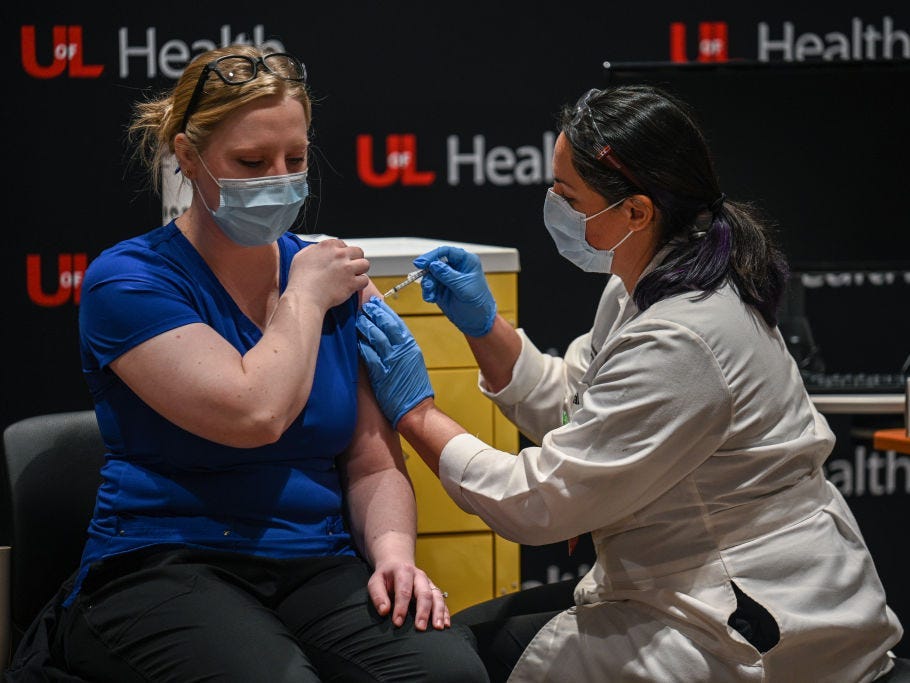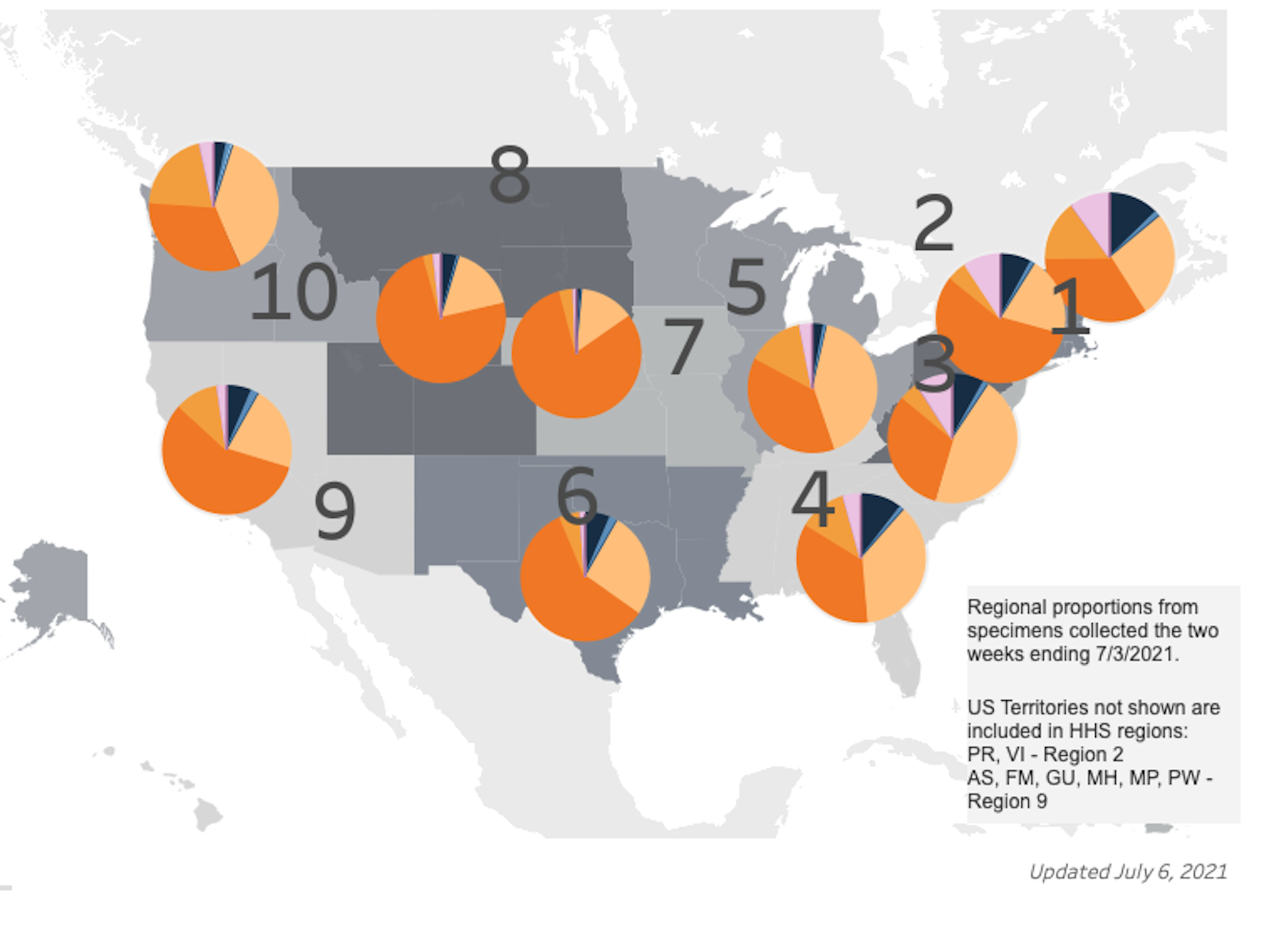
Jon Cherry/Getty Images
- The CDC now estimates that the Delta variant makes a majority of COVID-19 cases in the US.
- The variant is most common in Midwestern states like Iowa, Kansas, Missouri, and Nebraska.
- It is least prevalent along the eastern seaboard around Virginia and Pennsylvania.
- See more stories on Insider's business page.
The Delta variant makes up more than 51% of COVID-19 cases in the US, according to new estimates published this week by the Centers for Disease Control and Prevention (CDC).
The new data is the first time that an overall majority of US cases have been attributed to Delta, which has been spreading quickly across the US.
The variant was first detected in the US in March. In early April it represented fewer than 0.1% of cases, meaning it surged to dominance in a space of less than three months.
The map below shows the distribution of variants by region of the US. The darkest orange is Delta, the medium shade is Gamma and the lightest orange is the Alpha variant:

CDC
According to new CDC estimates, the Delta variant made up 51.7% of cases in the US in the two weeks ending on July 3. That is up from 30.4% in the two weeks ending June 19.
The Alpha variant, which was previously dominant in the US, caused 28.7% of cases in the same timeframe, down from 44.2% two weeks before.
A regional breakdown shows that the Delta variant is more common in Midwest and along the West Coast. It is less common in eastern states.
According to the CDC, the variant is the most common in the region made up of Iowa, Kansas, Missouri, and Nebraska, where it represents about 80% of cases.
The variant is the least common in Mid-Atlantic Region, with about 31% of Delta in Delaware, District of Columbia, Maryland, Pennsylvania, Virginia, and West Virginia.
Here's is the proportion of Delta variant per region, from most to least common:
- Region 7 (Iowa, Kansas, Missouri, and Nebraska): 80.7%.
- Region 8 (Colorado, Montana, North Dakota, South Dakota, Utah, and Wyoming): 74.3%.
- Region 6 (Arkansas, Louisiana, New Mexico, Oklahoma, and Texas): 58.9%.
- Region 9 (Arizona, California, Hawaii, Nevada, American Samoa, Commonwealth of the Northern Mariana Islands, Federated States of Micronesia, Guam, Marshall Islands, and Republic of Palau): 57.1%.
- Region 2 (New Jersey, New York, Puerto Rico, and the Virgin Islands): 56.6%.
- Region 5 (Illinois, Indiana, Michigan, Minnesota, Ohio, and Wisconsin): 38%.
- Region 4 (Alabama, Florida, Georgia, Kentucky, Mississippi, North Carolina, South Carolina, and Tennessee): 35.1%.
- Region 1 (Connecticut, Maine, Massachusetts, New Hampshire, Rhode Island, and Vermont): 33.9%.
- Region 10 (Alaska, Idaho, Oregon, and Washington): 32.4%.
- Region 3 (Delaware, District of Columbia, Maryland, Pennsylvania, Virginia, and West Virginia): 31.4%.
Vaccination remains widely protective against Delta variants. "If ever there was a reason to get vaccinated, this is it," Dr. Anthony Fauci, the White Chief Medical advisor, told CNN on Tuesday. The variant poses a "significant risk" to unvaccinated people, Fauci said.
Data from the UK showed that two doses of AstraZeneca or Pfizer vaccine were 60 and 88% effective, respectively, at protecting against symptomatic infection, and 71% and 94% protection against getting symptoms so severe they lead to hospitalization.
Johnson & Johnson and Moderna have also said that their vaccines remain efficient against the Delta variant.
On Tuesday, President Joe Biden announced a door-to-door initiative to encourage vaccination in the US.